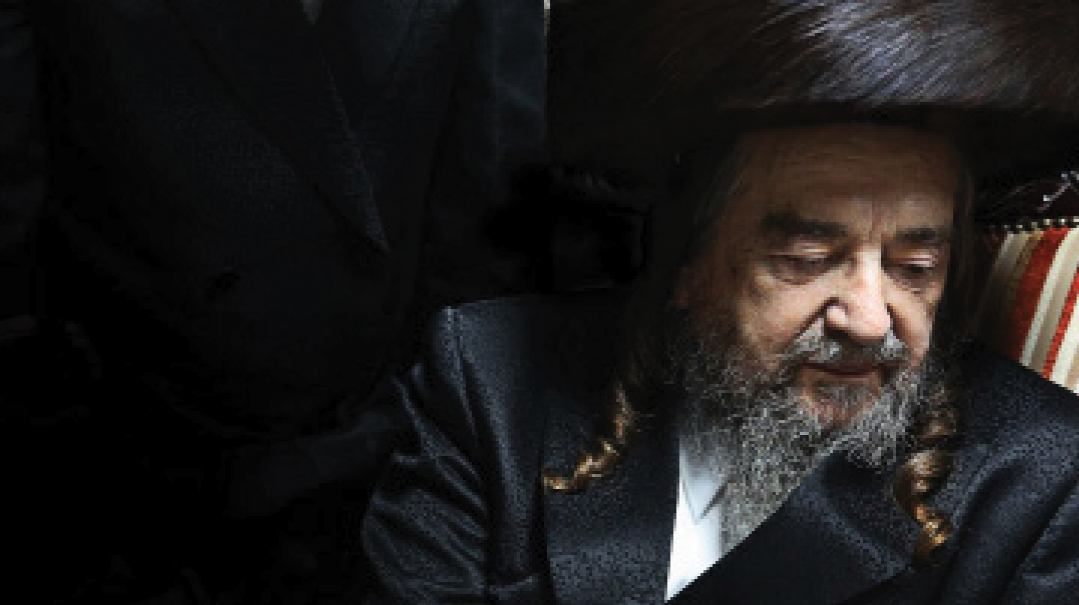The Struggle Is the Goal

Rav Yaakov Meir Shechter is no stranger to pain and challenges, but life’s difficulties have never dampened his primal, internal joy

Photos: Mishpacha archives
This is an article I wanted to write for 25 years, way before I heard of Microsoft Word, and my only exposure to Mishpacha was the Hebrew magazine you could read for free if you also bought knishes and ate them on site at the tiny bakery on Rechov Ashtori Haparchi, near the yeshivah of Rav Dovid Soloveitchik.
It’s a story that formed in a span of two hours, when, as a 20-year-old bochur, I got to sit in a large room with light brown tiles that felt like a million flights up in a building on the corner of a Jerusalem street that you would never find if you weren’t looking for it — and even if you were, it would take work.
I know it’s a thing for people to boast about having known popular gedolim before they were famous (“I used to walk right in/drive him/sit there for hours”), but in this case, it wouldn’t be accurate. Because people knew, even if there wasn’t yet a formal gabbai or appointment system.
There was a makeshift waiting room, some plastic Keter chairs in an entranceway, assorted family members — some of them hampered by emotional and physical delays — passing through and occasionally trying to discourage the people from waiting around.
But it never worked. People came because they’d heard the name of this “poshute Yid from Yerushalayim,” as he refers to himself, and wanted his brachos, his advice, to be connected with a man who seems to live in a current of electricity.
I knew of him because back in America, his sefer — it was called Leket Amarim — was passed around the yeshivah. It was different from the mussar classics on the shelves, even as it spoke of the very same Creator, and there was even something mildly contraband about it. But that wasn’t its appeal — it was more the way the author took ups and downs, struggles and obstacles, and fused them with Torah from the Gaon and the Chofetz Chaim and the Sfas Emes, and at 18, who doesn’t need to hear that? Whose soul isn’t silently crying for the message that the bad days are really good, the dark days have light, and the fight is what matters most?
I got inside, and the tzaddik — he looked like he was about 40 years old, with jet-black hair and beard and an unlined face, though now I know he was in his mid-sixties — took my hand.
I didn’t know much about Breslov, but you had the sense that this Yid with the large white yarmulke wasn’t there to bring you into his world, but quite the opposite — he’d take you on your terms and show you how right there, wherever you were, was where you were meant to be, to play your part in your story, not in someone else’s.
After answering my questions and offering brachos, he learned that I was from Montreal, and told me he had to get a package to Canada, so it was perfect: I was returning home for Pesach a few days later, and he got up and rummaged around for a set of tapes he was sending to a friend in Toronto. I didn’t bother running through the geography, but happily accepted the shlichus. He couldn’t find the tapes, and asked me to wait while someone brought them to the apartment.
I said sure, and instead of sending me out of the room, he let me sit there, at the table, while we waited.
He was a gracious host. He told me about the pictures on his wall — Rav Shmuel Shapira, walking in the streets of Meah Shearim with his eyes shut tight.
He trembled as he discussed man’s ability to completely rise above his surroundings, to “lach zich ois,” to laugh off the apparent actuality of this world and instead to see a different, truer reality.
And it’s this idea that would become his brand, his message, his appeal: from Breslover chassidim to roshei yeshivah to Litvaks to kano’im, his home became a magnet for all types of Jews in need of blessing or advice.
Because Rav Yaakov Meir Shechter isn’t just aware of Heaven, but connected to Heaven at every instant. Sit there and look at his eyes, which — even as they take in so many tzaros, shed tears for another Jew, flash with empathy and love — are focused elsewhere. Study his motions, the way he seems aware of another Presence besides you at all times. And hear his plea — to thank Hashem, to live with that gratitude, to see the constant flow of chesed and bounty.
In that humble apartment on Rechov Spitzer, where one could still touch the poverty and hardship, where unwell family members circulated, where suffering appeared the reality, he taught differently: There is only Hashem’s will, and Hashem does only good, and so it’s always good for the person who’s plugged in. The youthful face, the energy, the smile of delight, were what drew the people — a nation believing, but not always feeling to realize just how good it all really is.
Oops! We could not locate your form.












